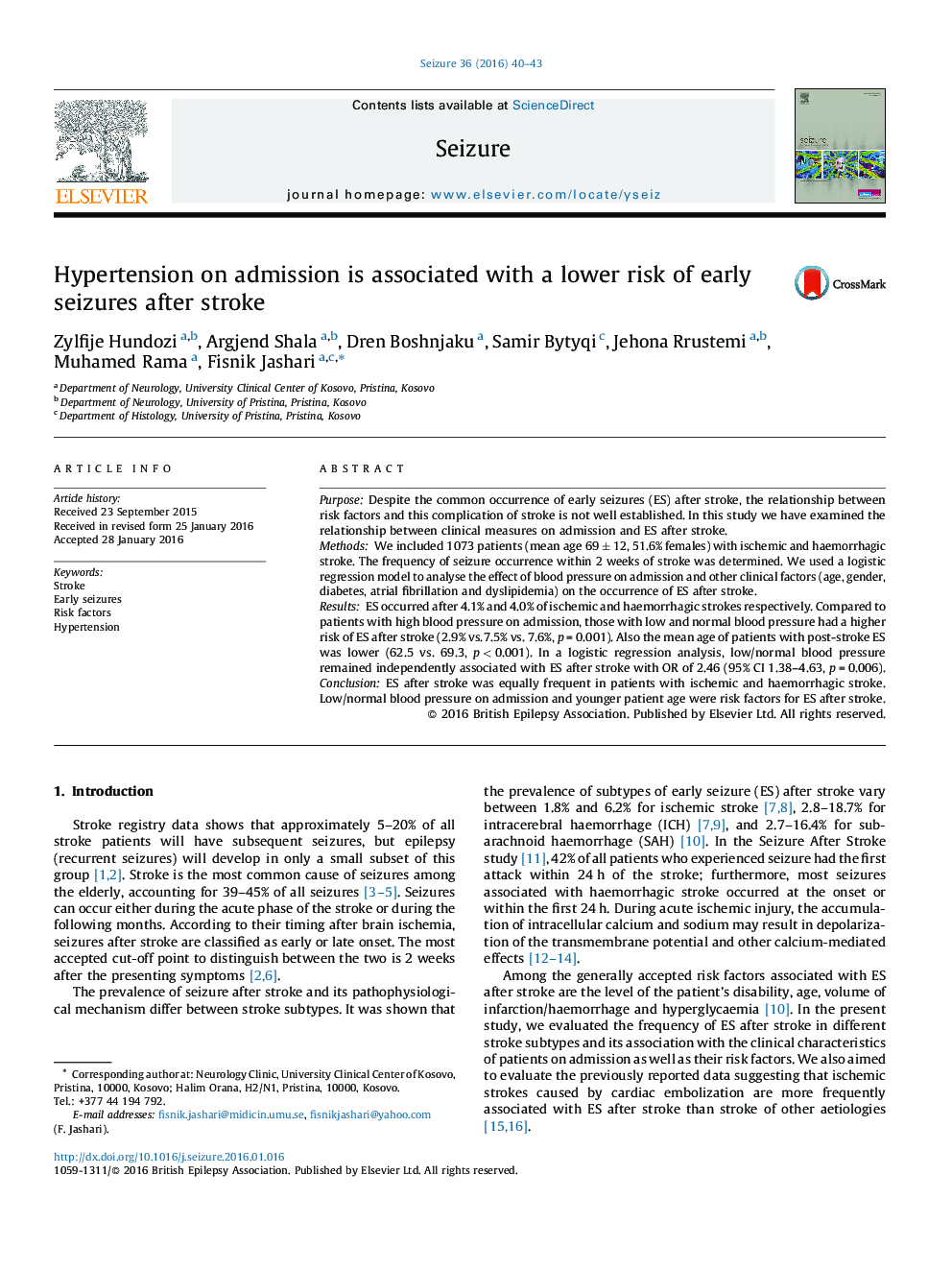| Article ID | Journal | Published Year | Pages | File Type |
|---|---|---|---|---|
| 340477 | Seizure | 2016 | 4 Pages |
•We have included 1073 patients with ischemic and haemorrhagic stroke.•Relationship between clinical measures and ES after stroke was determined.•ES after stroke was equally frequent in ischemic and haemorrhagic stroke patients.•Low blood pressure on admission was associated with higher risk of ES after stroke.•Younger patients (<65 years) were at higher risk of ES after stroke.
PurposeDespite the common occurrence of early seizures (ES) after stroke, the relationship between risk factors and this complication of stroke is not well established. In this study we have examined the relationship between clinical measures on admission and ES after stroke.MethodsWe included 1073 patients (mean age 69 ± 12, 51.6% females) with ischemic and haemorrhagic stroke. The frequency of seizure occurrence within 2 weeks of stroke was determined. We used a logistic regression model to analyse the effect of blood pressure on admission and other clinical factors (age, gender, diabetes, atrial fibrillation and dyslipidemia) on the occurrence of ES after stroke.ResultsES occurred after 4.1% and 4.0% of ischemic and haemorrhagic strokes respectively. Compared to patients with high blood pressure on admission, those with low and normal blood pressure had a higher risk of ES after stroke (2.9% vs.7.5% vs. 7.6%, p = 0.001). Also the mean age of patients with post-stroke ES was lower (62.5 vs. 69.3, p < 0.001). In a logistic regression analysis, low/normal blood pressure remained independently associated with ES after stroke with OR of 2.46 (95% CI 1.38–4.63, p = 0.006).ConclusionES after stroke was equally frequent in patients with ischemic and haemorrhagic stroke. Low/normal blood pressure on admission and younger patient age were risk factors for ES after stroke.
